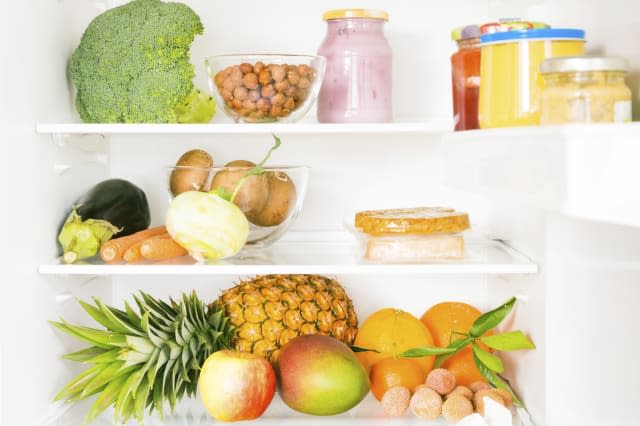Community fridges are coming: what are they?

How would you like to cut down on food waste, and get a load of food for free? It's the kind of win-win that sounds too good to be true, but it's exactly what the Community Fridge revolution is offering. And you have until the end of the month to take advantage.
See also: Hundreds of pounds of food binned by Tesco on Christmas Eve
See also: The five real reasons we're wasting food - from anoraks to social media stars
See also: Wait! Don't chuck it out! Best Before doesn't mean what you think
The idea of Community Fridges has come from Spain and Germany, and they have been started in four towns around the UK so far.
The idea is that local businesses and members of the public donate food they cannot sell or eat before it goes off. This food is then stored in a large fridge freezer, and anyone who feels like they need it, can help themselves - free of charge.
It's a great idea for anyone who cannot stop themselves from buying too much fresh fruit and veg - especially if they get carried away in the yellow sticker aisle. Instead of throwing the food away, it offers a perfect opportunity to ensure someone else is able to make good use of it.
It's also perfect for people who are caught in a cash flow crisis. Food banks may offer dried and tinned food, but the fridges add things like milk and fresh fruit and vegetables to their diet - which helps keep the family healthy as well as fed.
The fridges
Sainsbury's recently tried one out in Swadlincote - the town where it ran a comprehensive 'waste less save more' pilot. The fridge is actually run alongside a local food bank, but access is purely on an honesty basis, so there are no vouchers or requirements to meet
In the first four months, 1,388 kg of food that would otherwise have gone to waste was given out to the community, food was provided to 11 community groups, and 277 individuals visited the fridge to take what they needed.
In addition to the Sainsbury's scheme, there are a number of other independent fridge schemes. One of the first was the Community Fridge in Frome in Somerset, which was established last year and featured on Jamie Oliver's TV programme, Jamie and Jimmie's Friday Night Feast.
The People's Fridge in Brixton, meanwhile, was established earlier this year, after a crowdfunding campaign raised £2,000 for it. It is not manned, but it is checked at least twice a day, and any food that is not fit for human consumption is binned at the end of the day.
Last week, Botley in Oxfordshire opened its fridge - based in St Peter and St Paul Church. Anyone can take food from the fridge, but there are two sessions a week when the fridge is at its fullest, when those in need are encouraged to visit.
And a fifth Community Fridge is being planned for Milton Keynes.
In some towns, the volunteers have decided that it is intended for people who are struggling to afford fresh food. In other cases, everyone is welcome, regardless of need, because the priority is to reduce waste. Botley, meanwhile, has opted for a mixture of both approaches.
They all have specific rules too, designed to ensure the food is always safe (such as no meat or eggs, and no cooked food (unless from specific registered donors). They also use plenty of volunteers to keep checking the cleanliness and contents of the fridge - to ensure no risks are taken. However, the Frome fridge has received the highest possible food safety rating - so it's perfectly possible to eat safely from a community fridge.
Would it work for you?
Sainsbury's is now encouraging people to set up their own community fridge. It is offering grants of up to £50,000 - to a total of £1 million - for a variety of food waste initiatives. And you can bid to get your hands on the cash to set up a fridge of your own - as long as you apply before 31 March.
The money can be used to buy the fridge, find the right place to house it, fund the initial electricity and maintenance, and co-ordinate the volunteers needed to keep the initiative running after the grant runs out.
So what do you think? Does your local community need one? And would you eat food from a community fridge? Let us know in the comments.





